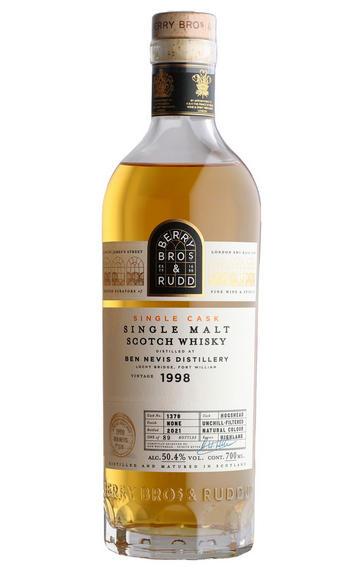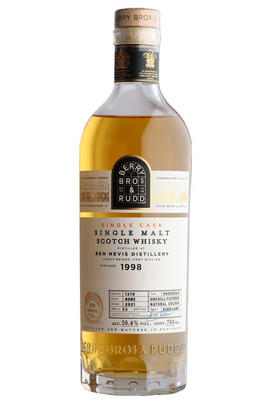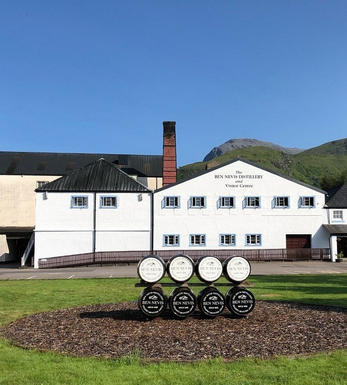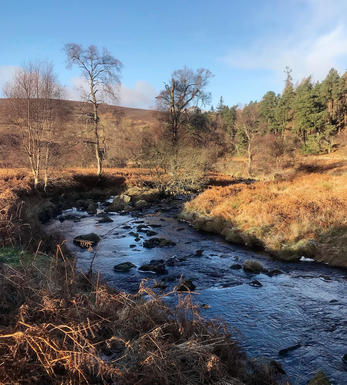
1998 Berry Bros. & Rudd Ben Nevis, Cask Ref. 1378, Highland, Single Malt Scotch Whisky (50.4%)

About this SPIRIT

Ben Nevis Distillery, Highlands
Ben Nevis (also 'Bennevis' and 'Benevas') is located in Inverness-shire, at the foot of the highest mountain of the United Kingdom (1,334 metres) by the same name.
The distillery was built in 1825 by 'Long John' McDonald. In 1955, the distillery came under the ownership of Joseph W. Hobbs, also proprietor of Bruichladdich, Glenesk, Glenkinchie, Glenury Royal, and Lochside. Hobbs installed a Coffey Still, and Ben Nevis became the first distillery to produce malt and grain whisky.
In 1981, the Long Johns extended the capacity of the stills, withdrew the Coffey still, and devoted themselves to malt whisky production. After a series of brief closures, in 1989, Ben Nevis was purchased by the Japanese group The Nikka Whisky Distilling Company, which re-opened it in 1990.
The Japanese influence is significant. Just like Suntory and Nikka, Ben Nevis offers a selection of single malts (most notably a 10 Year Old and a 26 Year Old) as well as a range of blends, including the Dew of Ben Nevis and 'Glencoe' 8-Year-Old Vatted Malt. As a result, a large proportion of the output is used in blends. The single malts provide excellent, classic Highland whisky, delighting their loyal fanbase. In 2014, Forgotten Bottlings were introduced, and some very old versions, such as the 1966, 1967, and 1968 versions, were released.
(Adapted from the Malt Whisky Yearbook 2024)

Highlands Whisky
Maybe because it is the largest geographical area, the Highlands is also the hardest Whisky region to pin down stylistically. For this reason it is easiest not to consider the Highlands as one large are, but as 4 smaller and much more distinct ones.
North-Highland malts tend to be light bodied, delicate whiskies with complex aromas and a dryish finish sometimes spicy, sometimes with a trace of salt. Northern Highland distilleries are almost all coastal. The most northerly is Old Pulteney, situated about as far north as you can go in Wick, which produces a delicious, fragrant, dry whisky.
Working south along the route of the A9, next comes Clynelish at Brora (built in 1969, beside an earlier distillery who’s whiskies are known as Brora) - a sophisticated and complex whisky older expressions are very highly regarded and the malt deserves to be better known. Perhaps the reason that it is rarely seen as a distillery bottling is that it’s malt is a key component of Johnnie Walker.
The best known of all the Northern Highland malts is Glenmorangie. Glenmorangie, is made at Tain on the Cromarty Firth, and is the most popular malt in Scotland. Over the last decade Glenmorangie pioneered the now often copied process of wood finishing. Althoght this process is not universally popular; it transformed the company’s commercial success.
The Eastern Highlands produce a number of whiskies that can be confused with those of Speyside. In the north of the region close to the southern border of Speyside, whiskies which are smooth, sometimes with a little smoke, malty-sweet, such as Macduff, Ardmore, Glen Garioch and Knockdhu are made.
Further south is Fettercairn, and Glencadam, at Brechin, which produces an unusual creamy, fruity malt. The area between the Moray and the Tay has two distilleries of note; Royal Lochnagar and Glendronach. The first is a wonderfully smooth, rich whisky made in the shadow of the mountain of the same name in a distillery established in 1825 The second is also luscious and often sherried.
In the Western Highlands there only two distilleries on the mainland those of Oban and Ben Nevis. Oban is a perfect, sheltered harbour makes it the principal seaport for the Isles and the capital of the West Highlands. Its whisky has a misty, briny character, with a background of heather and peat.
The Oban whisky stills used are among the smallest in Scotland; the cramped nature of the site is attested to by the odd position of the worm tubs, fed by unusually short lyne arms, and nestled in the ‘vee’ between the roofs of the still house and an adjoining building.
The whiskies of the Central Highlands are a mixed bag. Generally they are lighter-bodied and sweeter that their cousins to the east, but not as sweet as Speysides.
The Central Highland single malts used to be known as 'Perthshire Whiskies'. Most are found along the valleys of the Tay and its tributaries. The furthest north is Dalwhinnie, which is almost in Speyside indeed; it is at the very head of the river, over sixty miles from Grantown-on-Spey.
Blair Athol and Edradour whisky distilleries are both near Pitlochrie. The former was founded in the 1790s and was substantially rebuilt in 1949 Edradour is the smallest distillery in Scotland - a happy survivor of the days of 'farm distilleries' - yet produces a clean, fresh, attractive and justly popular whisky.
South again is Aberfeldy distillery, on the edge of the pretty town of the same name. Glenturret, at Crieff is one of the claimants to being the oldest distillery, although it was dismantled in the 1920s and is much changed.


Buying options
Add to wishlist
Description
Ben Nevis Distillery is one of a handful situated on the west coast of the Scottish mainland. The distillery, near Fort William, lies in the shadow of Britain's highest mountain, from which it takes its name.
Complexity is the order of the day here; the nose is at once malty with austere fruit, whilst a little time in the glass brings out green wine gums, dried pineapple and a very slight wood smoke note. Citrus bursts onto the palate with more tropical fruit, beeswax, cedar and mashed banana; as often with Ben Nevis, the back palate sings with vibrant grapefruit and pineapple fruitiness. There's a touch of spice on the finish along with slight malty smoky note. Late 90s Ben Nevis is increasingly becoming a fan favourite and this hogshead shows why: as these casks reach peak maturity, they show a complexity and beauty rarely rivalled in the world of malt whisky.
Cellar Plan members enjoy a 10% saving on this spirit. Reduction will be applied at checkout.
spirit at a glance
Delivery and quality guarantee